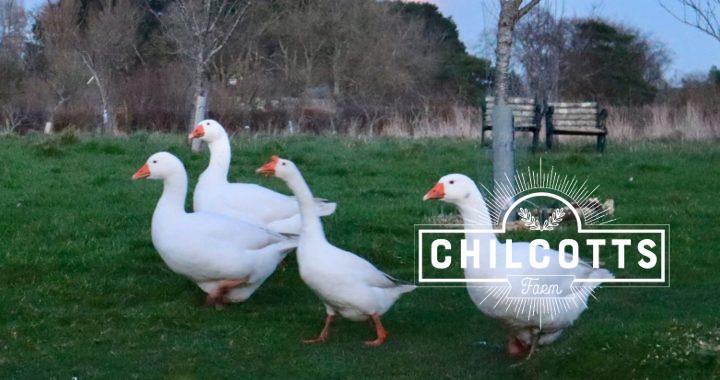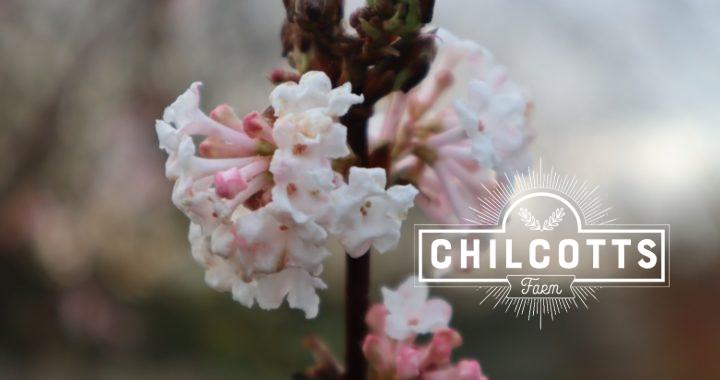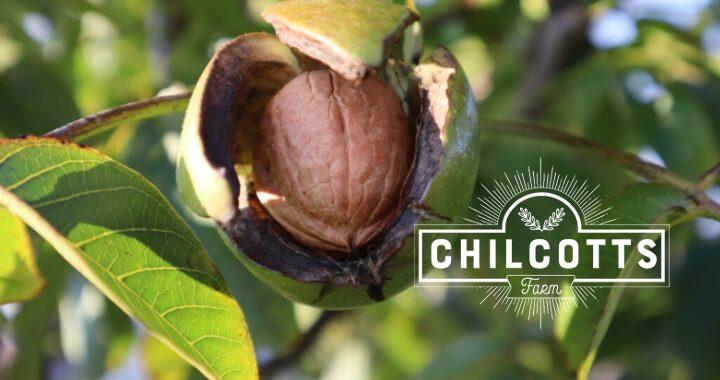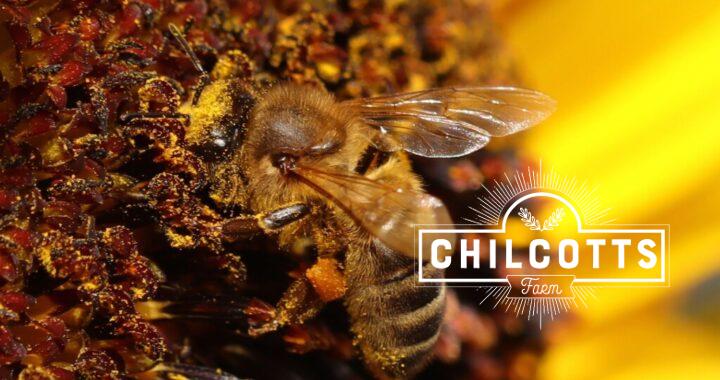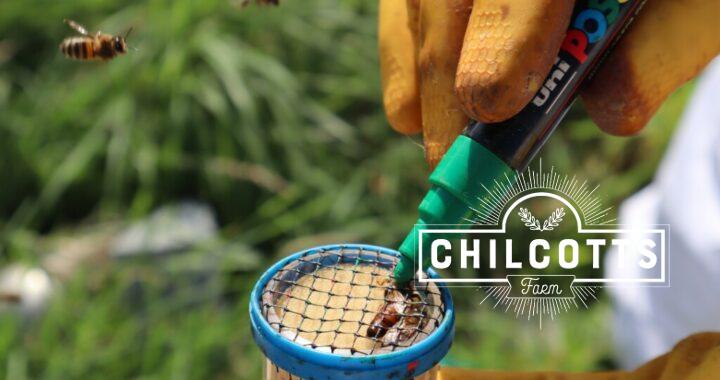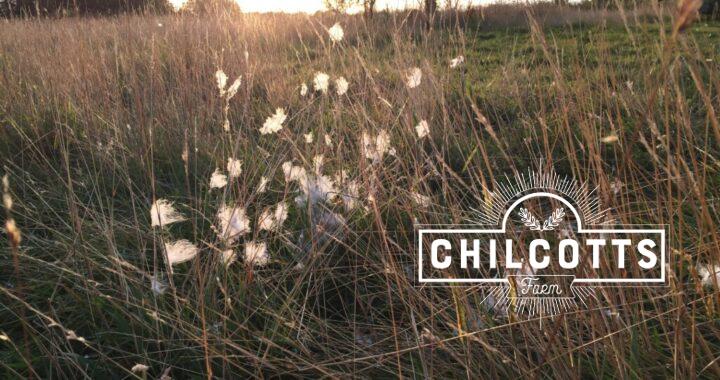Described as a Wolf Moon, the moon certainly had a presence this evening! I don’t think the picture does it justice.
Author: Chilcotts Farm
Happy New Year! 2020 is here!
A new year has begun, and the garden is already showing signs of life. Apart from the daffodils and snowdrops poking up through the ground, this beautiful and fragrant Viburnum flower is putting on a beautiful show!
Bee Clean
I look out on the beehives every day, but make an effort at least once a week to do a quick walk around and check there are no issues.
Most of the time, they seem quiet with nothing happening. They might as well be empty boxes. However, today one of the hives had this big pile of dead bees outside.
Bees keep there hives clean and tidy and this one had just had a big clean-up pushing out all the bees that had died.
It appears alarming to see this small handful of bees on the ground, but this can be quite usual. As the bees born in the summer die they fall to the bottom of the hive.

As part of housekeeping, the overwintering bees will cast all the bodies out of the hive entrance.
This happened to bee a bright warmish day, and later on bees could be seen flying from all the hives, including this one.

Walnuts are falling!
I checked the walnut trees a week ago to see if the nuts were ready.
The tree still showed the green fruit intact with no signs of releasing its nut from the fruit.
I checked again yesterday, and within just one week, the tree had started to drop its fruit. The green fruit had split open, and some of the nuts were lying on the ground. Others were just about to fall.
I quickly gathered and picked all the nuts before an opportunist squirrel or mouse had the opportunity.
They are now all drying in the warmth of the utility room, to be eventually stored in our outside store, ready for eating at Christmas!

Walnut fruit 
A walnut tree shedding its seed, the walnut 
This year’s harvest of walnuts
Ivy Flowers, good for the Bees
Even though October is drawing to a close, on warm days the bees are VERY busy.
If you look closely at the ivy, you can see it covered in insects busy at work on the ivy flowers. Not only honey bees, but wasps, flies and bumble bees. All going about their work gathering or consuming the produce of the ivy flower.
The Ivy flower is quite easily overlooked, but is a valuable source of nectar and pollen for the bees. Especially at this time of year when there is not much more forage around. This is one of the last chances for the bees to gather last minute stores.

Honey Bee On a Sunflower Covered in Pollen
This little lady was buy yesterday on a late sunflower. Even though it is mid September, some of the sunflowers are still in full bloom, and the bees are all over them. They must be a good source of pollen at this time of year!
Propolis or Bee Glue
This year, the bees seemed to have produced a large amounts of propolis, which has made working the hives quite difficult.
Bees use this to seal up small holes and gaps in the hive. Quite often the small gap between the frames are glued together making inspection a bit harder as the frames have to be unstuck and the propolis scrapped off.
Proplis is a product of bee saliva, wax and tree resins. It is meant to have anti-bacterial and fungal properties and can be found in the use of health and healing products.
This picture was taken on a warm day when the propolis was really sticky and flexible. When colder it can become quite brittle. The picture shows the propolis after I had scrapped it off the top of a frame. The frame was stuck to the crown board (a board that covers the top of the frames).
New Bees for the Winter
As we move toward the winter months, the hive is beginning to prepare for the colder weather. Having gathered their honey as winter food to keep them going until the first spring flowers, the winter bees are beginning to emerge.
If you look closely, you can see some bees just poking their heads out of their cell. They are removing the capping from the cell where the egg was laid and they have transformed into a bee. Once emerging they will join the rest of the colony.
These new bees are potentially the bees that will take the colony through the winter until early spring. Winter bees tend to live for 5 months, whereas the bees hatched out in spring and summer live for about 6 weeks!
Marking the Queen Bee
As the season draws to a close, it gives me a chance to undertake some final checks on the colony and perform some house keeping.
Today was a chance to mark some of this year’s queens. The queen bee is larger than the workers, but is often difficult to find amongst all her daughters. Being able to easily see her speeds up the hive inspection.
Queens are colour coded depending on the year, this helps you remember their age. For 2019 the colour is green.

Fox Attack & a Goose Killed
Yesterday afternoon one of our geese was killed by a local fox in Bickington.
This year we have now lost to foxes two ducks, a chicken and now a goose. We have not had loses like this for the last 7 years.
Fortunately, each time it has only been a single bird taken, and appears to be an opportunist always attacking in broad daylight in the afternoon. I suspect a young brazen fox, or a parent feeding cubs.
A warning to any other poultry keepers, or small pet owners in the Bickington or Fremington area, be vigilant!

